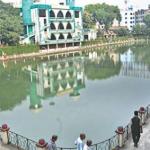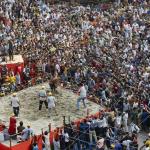Introduction:
Dhaka is the capital and largest city of Bangladesh. It is a city with a rich history and culture, and it plays a vital role in the country's economy. In this article, we will delve into the history of Dhaka, including its previous names and the reasons behind the name changes. We will also explore the main economy of Dhaka and its importance in the overall economy of Bangladesh.
Dhaka, also known as Dacca, has been through several name changes throughout its history. It was originally known as Jahangir Nagar during the Mughal Empire, which ruled the area from the 16th to the 18th century. The name was changed to Dacca during the British colonial period, and it was officially changed to Dhaka after the country's independence in 1971.
The main economy of Dhaka is based on its textile and garment industry, which accounts for more than 80% of Bangladesh's total exports. Dhaka is also a major center for banking and finance, and it is home to many large businesses and industries. The city's economy is growing rapidly, and it is expected to continue to play a significant role in the overall economy of Bangladesh.

Dhaka has a long and fascinating history, dating back to the 7th century. The city is believed to have originated as a small settlement on the banks of the Buriganga River. Over time, it grew in size and importance, and it became a major center of trade and commerce. In the 16th century, the Mughals conquered the area and made Dhaka the capital of their Bengal Subah province. Under the Mughal rule, Dhaka became a center of culture and learning, and it was renowned for its beautiful gardens and palaces.
In the 18th century, the British East India Company gained control of Dhaka and the surrounding region. The city became a major center of the British colonial trade in textiles and other goods. During this time, the city underwent significant development and modernization, and many of its famous architectural landmarks were built.
Today, Dhaka is a bustling metropolis with a population of over 18 million people. It is a city of contrasts, with modern high-rise buildings and ancient temples coexisting side by side. Despite the challenges of rapid urbanization, Dhaka is a city that is full of life and energy, and it is a major cultural and economic hub of Bangladesh.
about the culture and tourism in Dhaka.
Dhaka is not only an important economic hub, but it is also a city rich in culture and history. The city is home to many historical and cultural landmarks, including the famous Ahsan Manzil, also known as the Pink Palace, which was the residence of the Nawab of Dhaka in the 19th century. Another important cultural landmark is the Lalbagh Fort, which is a 17th-century fort built by the Mughals. The fort is now a popular tourist attraction and it offers a glimpse into the rich history of the city.
The city is also home to many museums and galleries that showcase the art, culture, and history of Bangladesh. The Bangladesh National Museum, for example, is a major museum that houses a vast collection of artifacts and art from the country's history. The Bangladesh National Gallery of Fine Arts is another important cultural institution that showcases the works of contemporary Bangladeshi artists.
Dhaka is also known for its vibrant street life and markets. The city is home to many traditional markets, such as the famous New Market, which is a popular shopping destination for both locals and tourists. The city is also famous for its street food, which is considered a major part of the city's cultural heritage. Visitors can find a wide variety of street food, such as samosas, chaat, and biryani, which are popular dishes in the city.

In addition to its cultural and historical attractions, Dhaka is also home to many beautiful parks and gardens, such as the Ramna Park and the Dhaka University Botanical Garden. These parks are popular among locals and visitors alike, and they offer a peaceful escape from the hustle and bustle of the city.
In conclusion, Dhaka is a city with a rich and fascinating history. From its origins as a small settlement on the banks of the Buriganga River to its current status as the capital and largest city of Bangladesh, Dhaka has played a crucial role in the country's economy. The textile and garment industry is the main economy of Dhaka, which accounts for over 80% of the total exports of Bangladesh. The city is also a significant center for banking and finance and is expected to continue to play an important role in the overall economy of Bangladesh.









